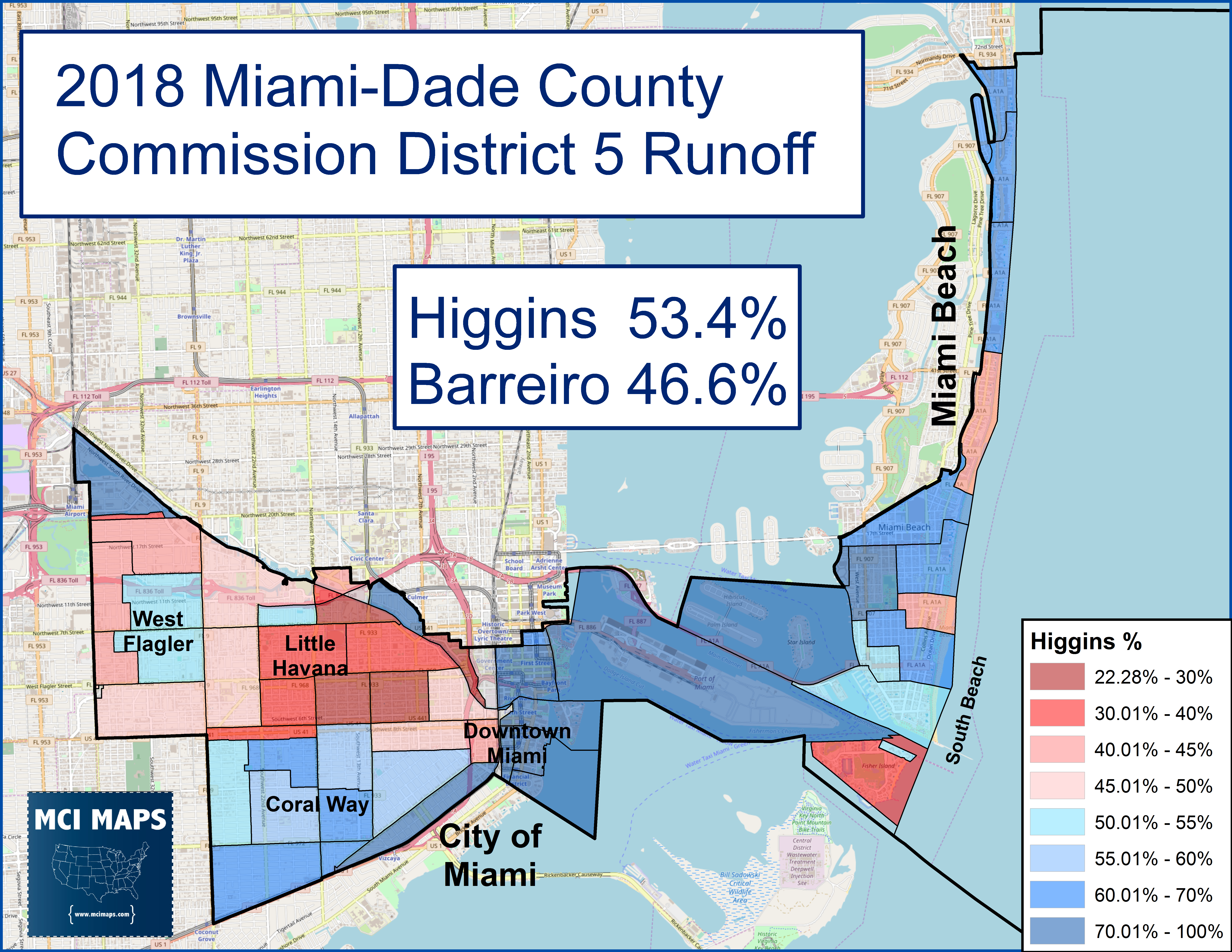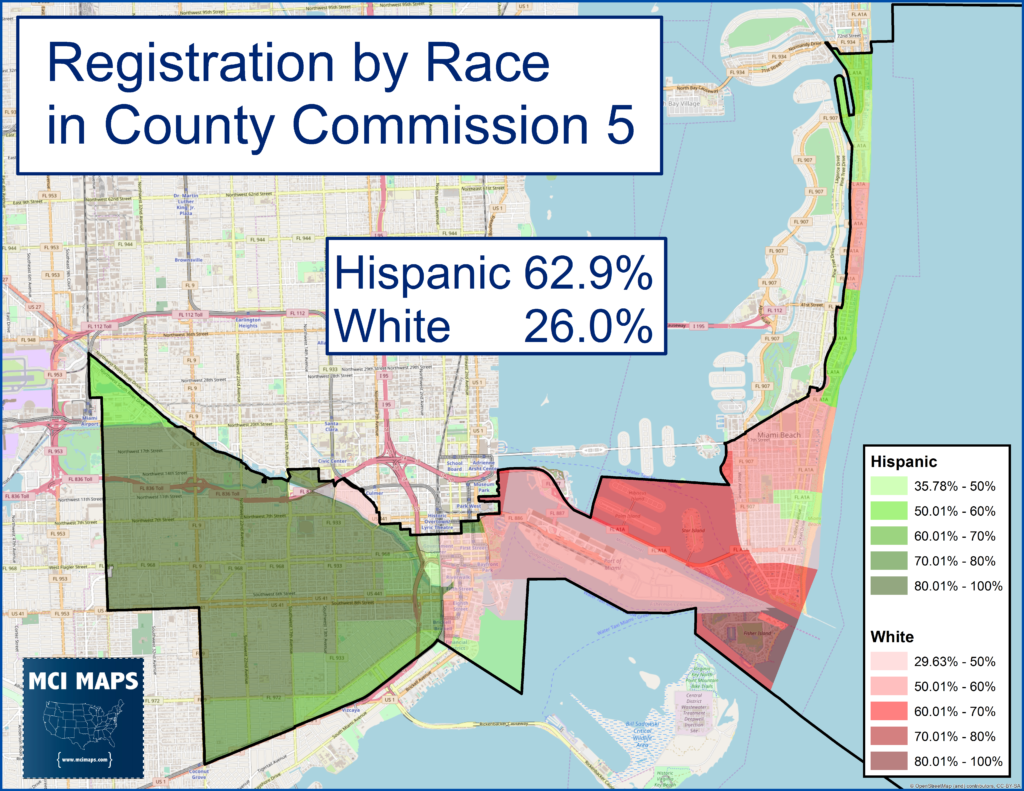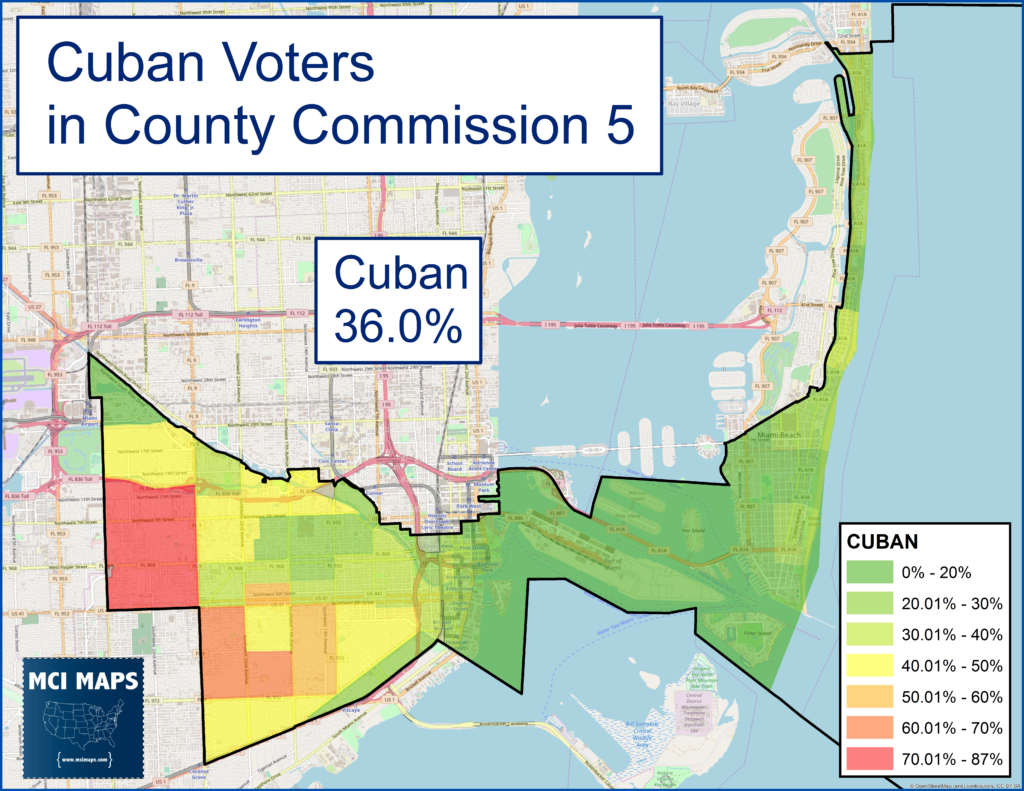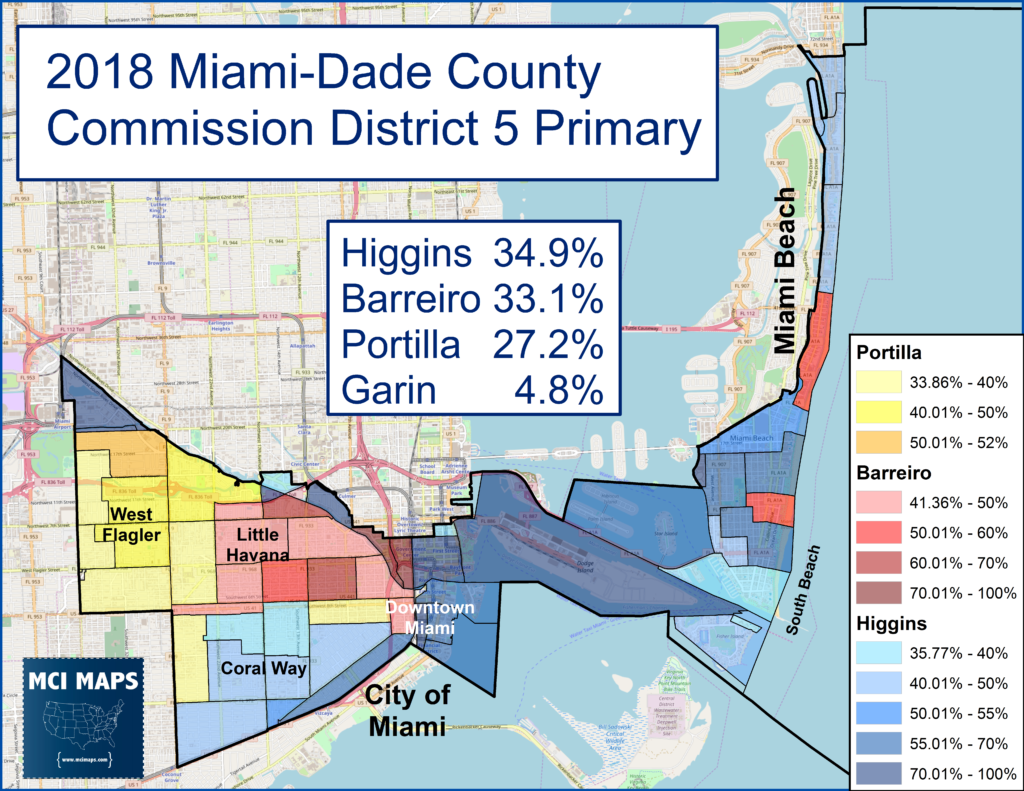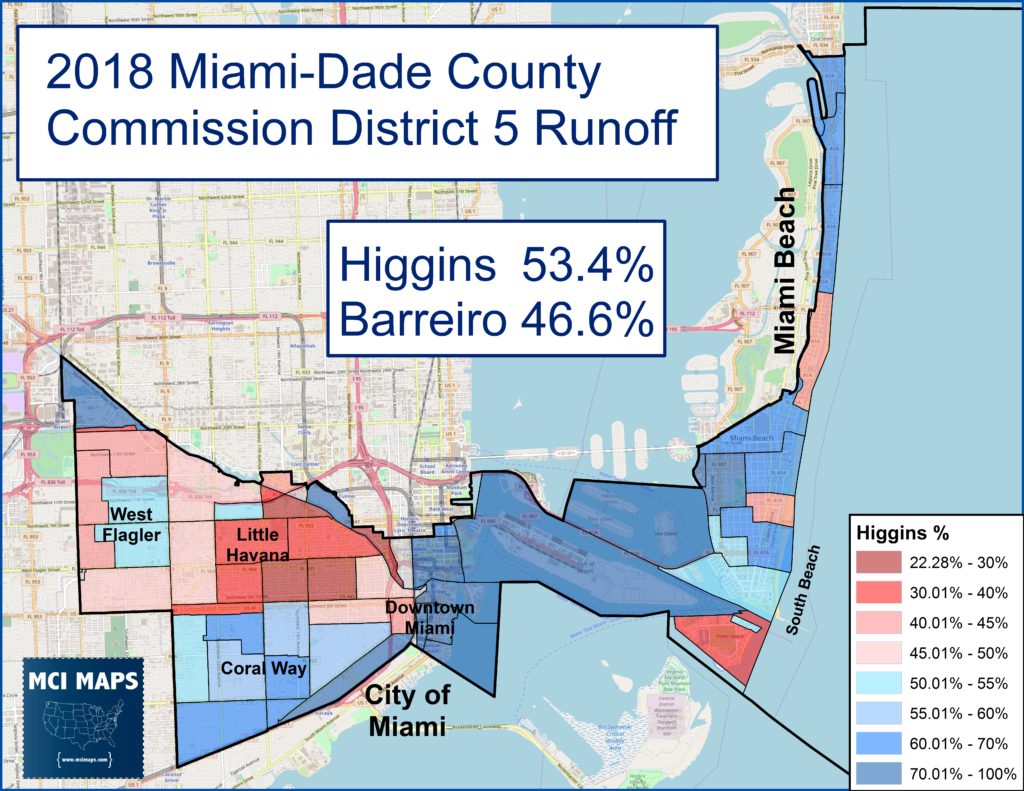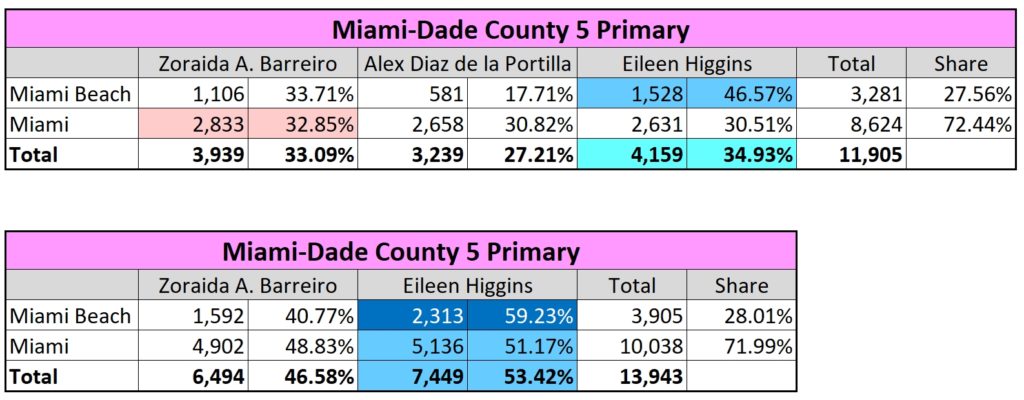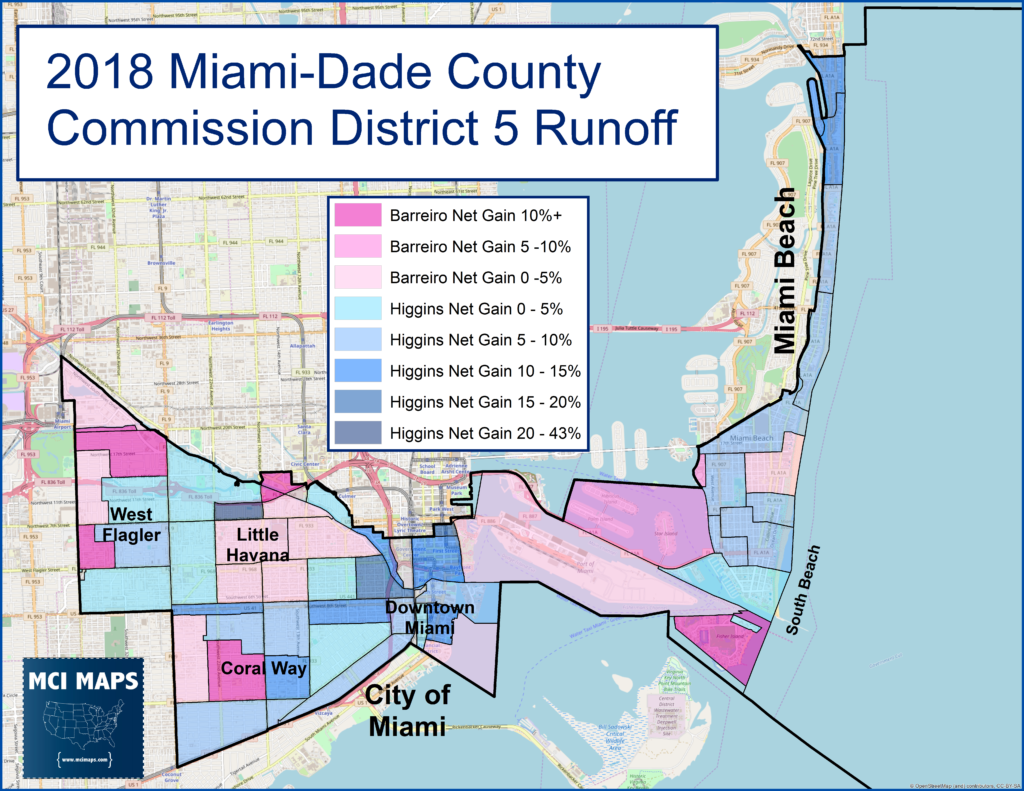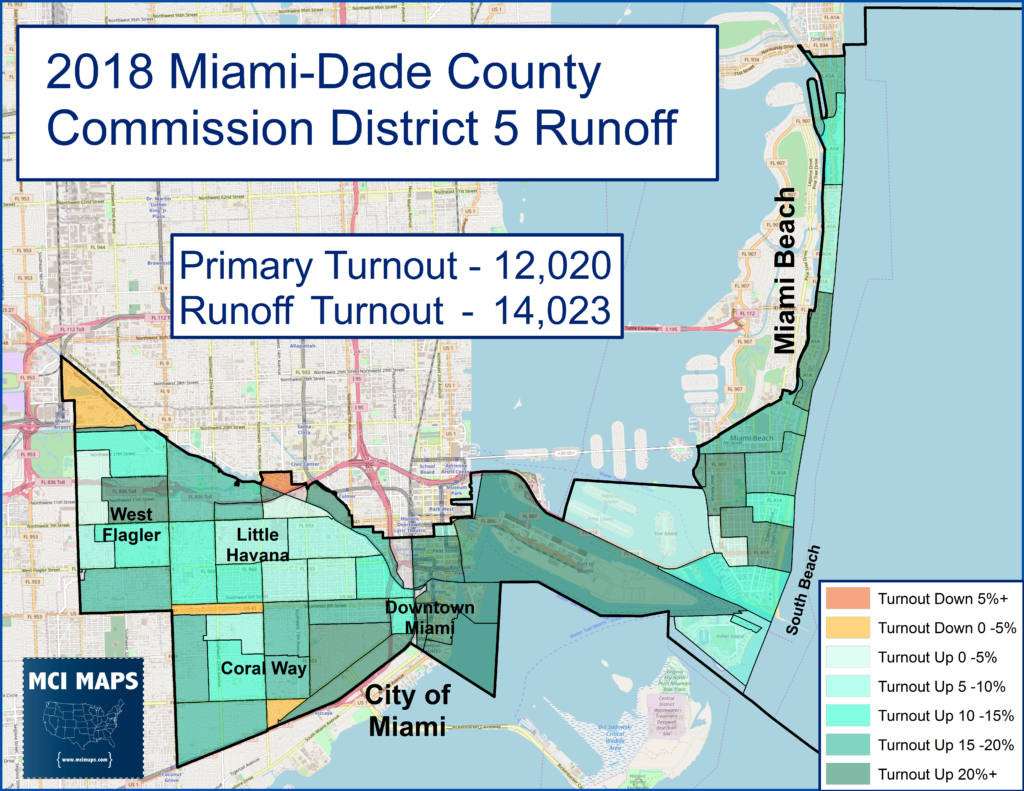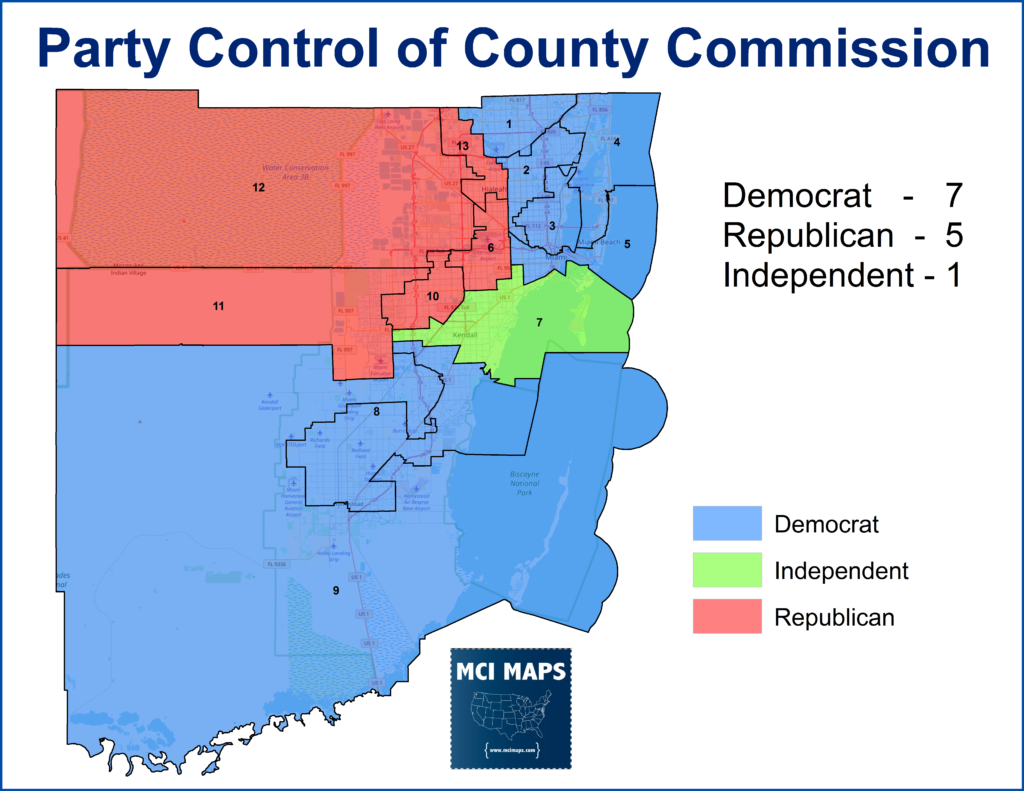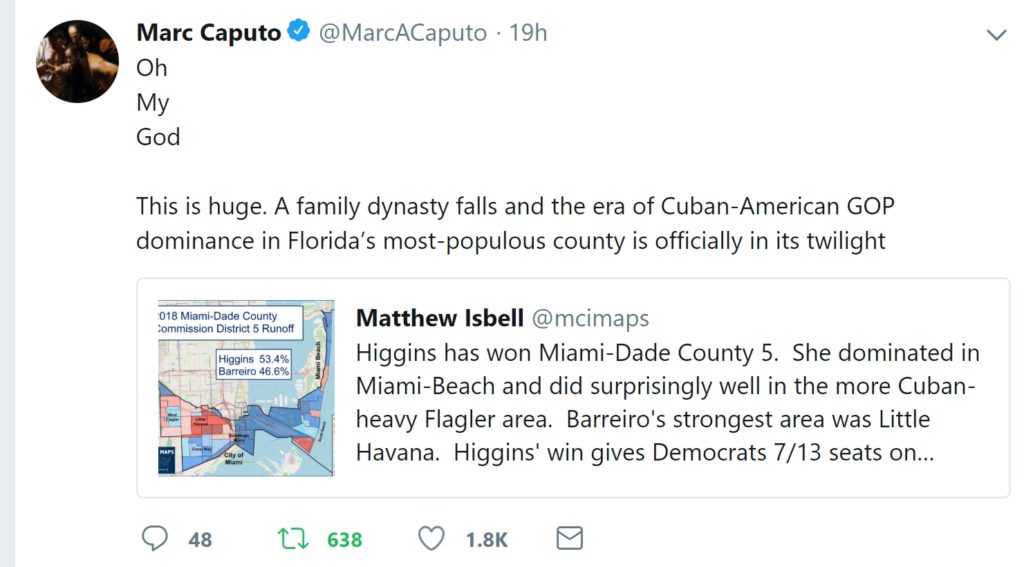A political earthquake sent shock-waves rippling through Miami-Dade politics last night. In the special election for Miami-Dade County District 5, Democratic-backed candidate Eileen Higgins upset Republican-aligned Zoraida Barreiro to give Democrats 7 of 13 seats on the county commission. This was never supposed to be what happened when the special election was called just a few months back. Incumbent Bruno Barreiro has resigned his seat to run for congress in the Florida 27th. You can read much more about the district in this article from May. If you aren’t very familiar with the race of Dade politics, I recommend that read before continuing. A quick overview – the district is a majority Hispanic seat that includes Cuban communities like West Flagler and Little Havana; while also stretching into Miami-Beach.
The district is Democratic at the top of the ticket, backing both Clinton and Murphy, but is more GOP friendly down-ballot – a common theme in Miami-Dade politics.
The resignation was designed to create a short-timed special election that would benefit his wife, Zoraida, as she aimed to replace her 20-year Incumbent husband. The race, however, became a much more lively affair thanks to Democrats rallying around newcomer Higgins; and Republicans being split between Barreiro and former State Senator Alex Diaz de la Portilla. Both Portilla and Barreiro represented powerful Cuban Republican families that had long histories in politics. Many speculated both would advance the first round of voting and make it to the runoff. Elections for commission are officially non-partisan, but both parties got involved in the race.
In the May primary, Higgins not only advanced but came in first. She demonstrated a strong campaign ground game and raised less than her two main opponents but still enough to be competitive. While she was white, she spoke Spanish well, a key in the Hispanic seat where many Cubans speak both languages. Higgins dominated the vote around Downtown Miami and in Miami-Beach. Barreiro was strongest in Little Havana; while Portilla’s base was around West Flagler.
The combined GOP vote was well over 50% and Higgins’ runoff chances were written off. I personally believed Higgins was the underdog but victory was not out of the realm of possibility. The key would be what the runoff electorate looked like. We don’t have final turnout figures yet, but for Higgins the key was a boost in Democrats and hoping some Republicans stayed home. It was hard to see Portilla voters going to Higgins; so a shift of the electorate was needed. Democrats increased efforts into ground game and persuading as well as boosting turnout.
Higgins was an aggressive campaign and was given the nickname “La Gringa” by Spanish backers and some opponents; as well as the press. Higgins being white and running against a Cuban-born opponent was expected to hurt her in the Cuban community. For Higgins the question was how non-Cuban Hispanics would vote. Meanwhile, Barreiro got the backing of the powerful institutions in the county and raised far more than Higgins, raking in hundreds of thousands of dollars. Even most of the Democratic commissioners stayed out of the race.
When the results came in, it was a shocker, Higgins won by a solid 7 point margin.
Higgins fortunes looked strong when the first ballots to come in were absentees and they only gave Barreiro a narrow edge. The absentee chase operation by the Barreiro family was legendary and was expected to give her campaign a buffer against a more Democratic early vote and election day. Absentee ballots in the area are more older Cuban and lean Republican. In a low-turnout special, that makes those votes even more powerful. However, Democrats chased their ballots as well and kept the margin neck and neck. Then election day and early voting boosted Higgins into a solid lead.
Higgins was strongest in Miami-Beach and Coral Way, but her showings in Flagler are also notable. While she lost Little Havana by a predictable margin, her narrow loss and narrow wins in Western Flagler precincts were good for a Democrat. Whether this was Portilla voters crossing over, or a different electorate showing up (perhaps less older Cuban) for the runoff is not yet clear. When the final voter list comes out we will know more. Higgins won both the Miami Beach and Miami portions of the district.
The map below shows how Higgins and Barreiro improved compared to each-other. Overall Higgins had larger net improvements around West Flagler and most of Miami-Beach. Barreiro had the strongest net improvements around Little Havana and the high-rise condos of southwest Miami Beach.
Turnout was up across the district, but it increased the most around Downtown and in Miami-Beach. Little Havana, meanwhile, had more modest gains, which no doubt hurt Barreiro.
In the end, the election gives Democrats control of the officially non-partisan Miami-Dade County commission. Democrats and the lone independent control all the seats along the coast; while Republicans are relegated to the Cuban-dominated inland districts.
Party unity isn’t absolute in Miami-Dade so short term effects may not be obvious. What this no doubt does is embolden Democrats in the County to be aggressive about the 2020 Miami-Dade Mayoral Election. What this election ultimately does is signal a twilight to the era of GOP dominance in Miami-Dade County. Former Miami Herald and current Politico Florida reporter Marc Caputo couldn’t have said it any better.

